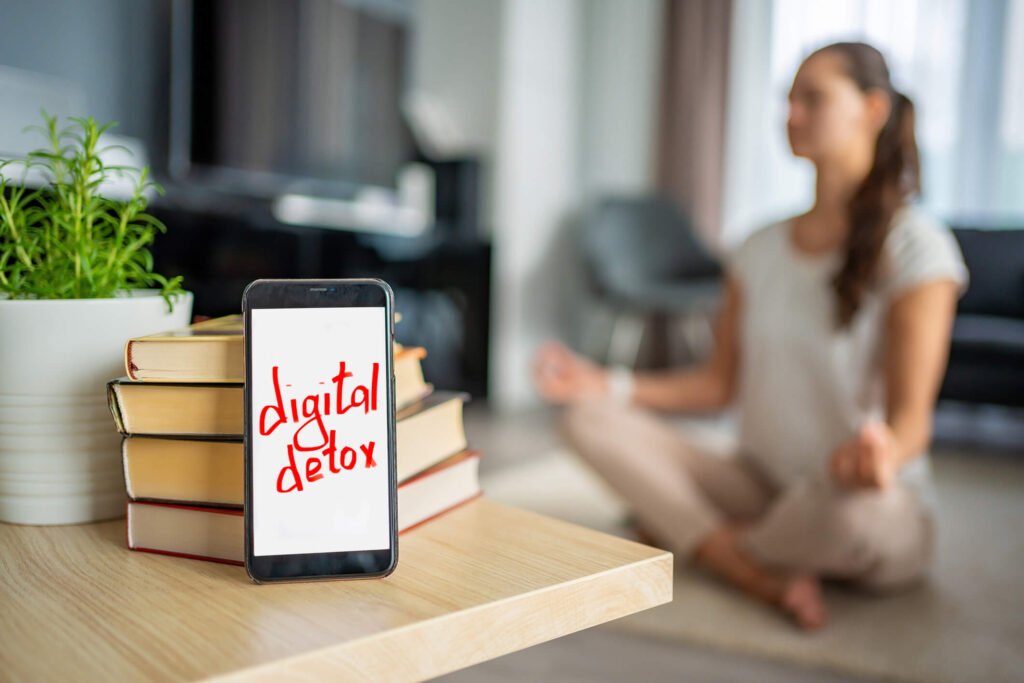
🧠 Understanding the Link Between Screen Time and Anxiety
In our hyper-connected world, excessive screen time has become a significant contributor to rising anxiety levels. Continuous exposure to digital devices can lead to:
- Mental Fatigue: Constant notifications and information overload can overwhelm the brain.
- Sleep Disruptions: Blue light from screens interferes with melatonin production, affecting sleep quality.
- Social Comparison: Social media platforms often foster unrealistic comparisons, leading to feelings of inadequacy.
- Reduced Attention Span: Frequent multitasking on devices can impair concentration and increase stress.
Implementing a digital detox can help mitigate these effects, promoting better mental health and reducing anxiety.
Table of Contents
📉 The Impact of Digital Overload on Mental Health
Excessive screen time doesn’t just strain the eyes—it affects the mind. Key consequences include:
- Increased Stress Levels: Constant connectivity can elevate cortisol, the stress hormone.
- Impaired Sleep Patterns: Late-night screen use disrupts circadian rhythms, leading to insomnia.
- Decreased Productivity: Multitasking across devices hampers efficiency and focus.
- Emotional Exhaustion: Continuous digital engagement can lead to burnout and emotional fatigue.
Recognizing these impacts is the first step toward reclaiming mental well-being through a digital detox.
✅ Practical Strategies for a Successful Digital Detox
Embarking on a digital detox doesn’t mean eliminating technology entirely. Instead, it’s about creating a balanced relationship with digital devices. Here are actionable steps:
1. 📵 Set Clear Boundaries
- Designate Tech-Free Zones: Keep bedrooms and dining areas free from devices to encourage relaxation and interpersonal connections.
- Establish Screen Time Limits: Use apps like Digital Wellbeing or Screen Time to monitor and restrict usage.
2. 🧘♀️ Incorporate Mindfulness Practices
- Meditation and Deep Breathing: Allocate time daily for mindfulness exercises to center the mind and reduce stress.
- Engage in Offline Hobbies: Activities like reading, painting, or gardening can provide therapeutic benefits and reduce reliance on screens.
3. 🌿 Reconnect with Nature
- Outdoor Activities: Regular walks, hikes, or simply spending time in green spaces can significantly lower anxiety levels.
- Nature Retreats: Consider occasional getaways to areas with limited connectivity to fully immerse in the environment.
4. 💤 Prioritize Quality Sleep
- Digital Curfew: Avoid screens at least an hour before bedtime to enhance sleep quality.
- Alternative Evening Routines: Engage in calming activities like reading a physical book or taking a warm bath before sleep.
5. 🔕 Manage Notifications
- Customize Alerts: Disable non-essential notifications to minimize distractions and interruptions.
- Scheduled Check-Ins: Allocate specific times to check emails and messages, reducing the urge for constant device checking.
📈 Benefits of a Digital Detox
Implementing these strategies can lead to:
- Reduced Anxiety: Lower stress levels and improved mood.
- Enhanced Focus: Better concentration and productivity.
- Improved Sleep: Deeper, more restful sleep patterns.
- Stronger Relationships: Increased face-to-face interactions and connections.
📌 Final Thoughts
Incorporating a digital detox into your routine can be a transformative step toward reducing anxiety and enhancing overall mental health. By setting boundaries and engaging in mindful practices, you can foster a healthier relationship with technology.
Note: For personalized advice, consider consulting with a mental health professional.